Articles LFCN Entrapment (Meralgia Paresthetica)
Burning on the front side of your thigh can be due to an LFCN entrapment. Please continue reading to learn about what the LFCN is, basic anatomy, causes, symptoms, diagnosis, management and physiotherapy treatment.
Basic Anatomy
The nerves in your legs all arise from your lower back and pelvis. Some of these nerves supply the muscles to allow movement and some supply the skin to enable sensation.
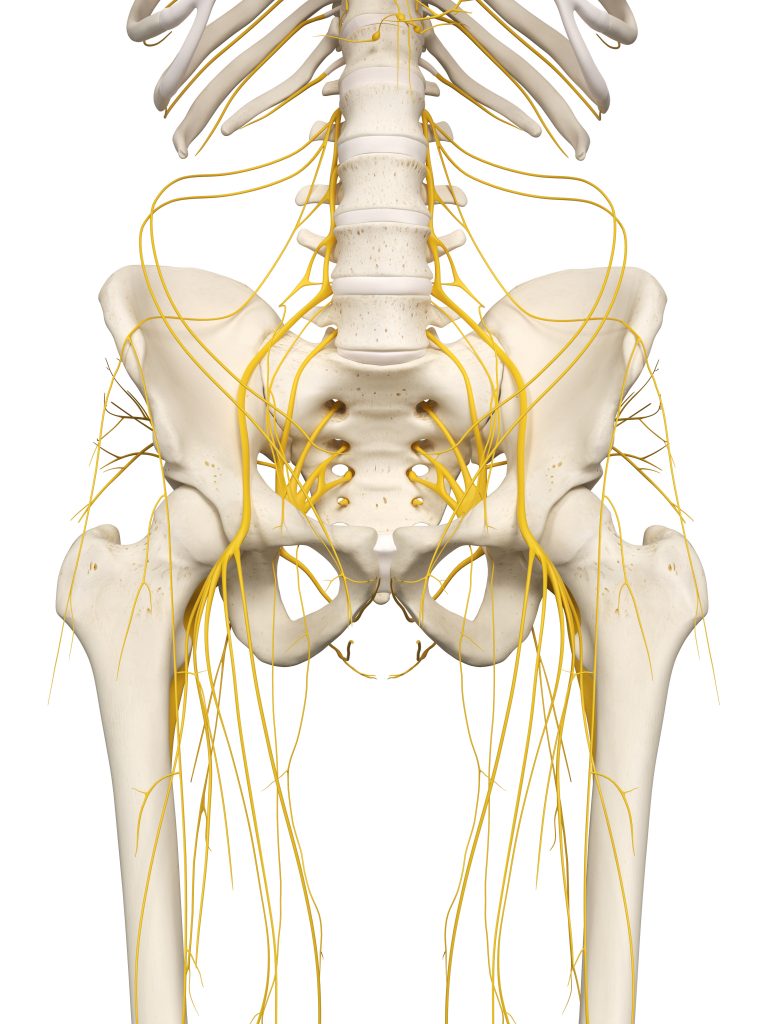
What is Your Lateral Femoral Cutaneous Nerve (LFCN)?
Your LFCN is a nerve that supplies the skin on the front and side of your thigh to allow sensation.
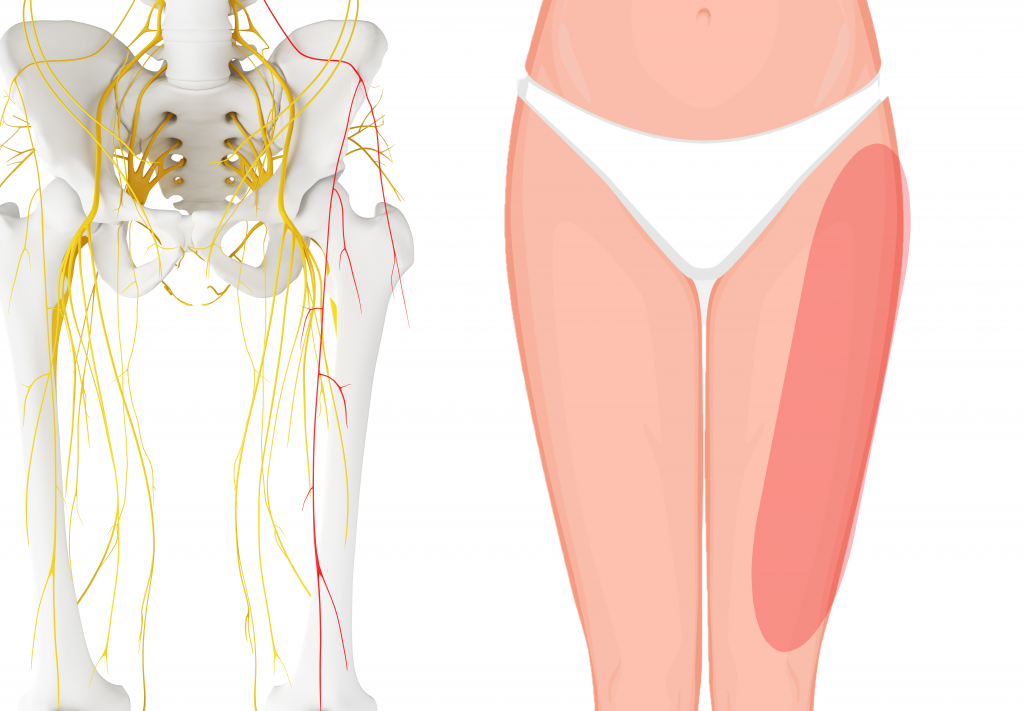
As it descends into your leg it travels underneath a ligament in your groin. Problems can arise if your LFCN becomes compressed on the under side of this ligament.
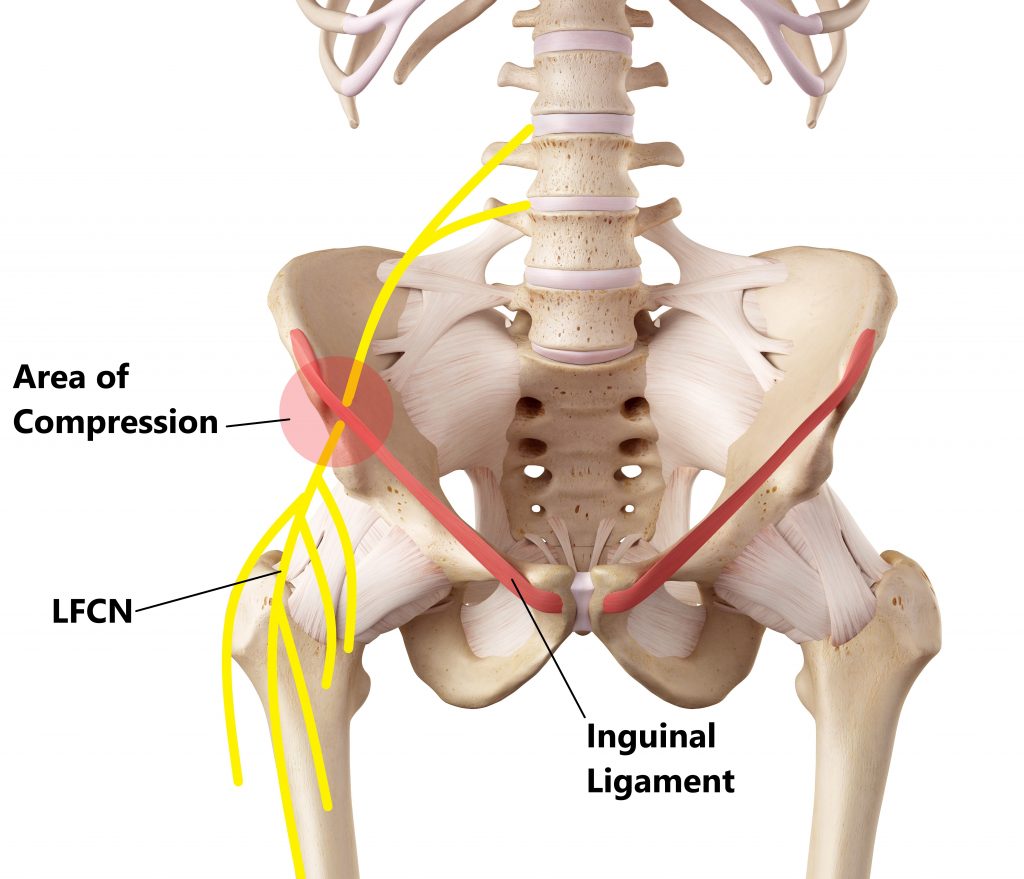
What causes Your LFCN to Become Compressed?
- tight fitting clothing (i.e. tight waist bands, heavy work belts)
- obesity/weight gain
- health conditions increasing your abdominal mass (i.e. pregnancy, diverticulitis)
- following trauma (i.e. seat belt injury from a car accident)
- following surgery where you are required to lie face down for a prolonged period of time (i.e. hip, lower back surgery)
- post operative scarring following surgery to the groin/pelvis area
- medical conditions causing neuropathy (i.e. diabetes, hypothyroidism)

Symptoms
- pain, burning, tingling, numbness, coldness, hypersensitivity or buzzing on the front side of your thigh
- aggravation of symptoms with prolonged standing
- ease of symptoms with sitting
- reproduction of pain when pressure is applied over the front of the hip/groin
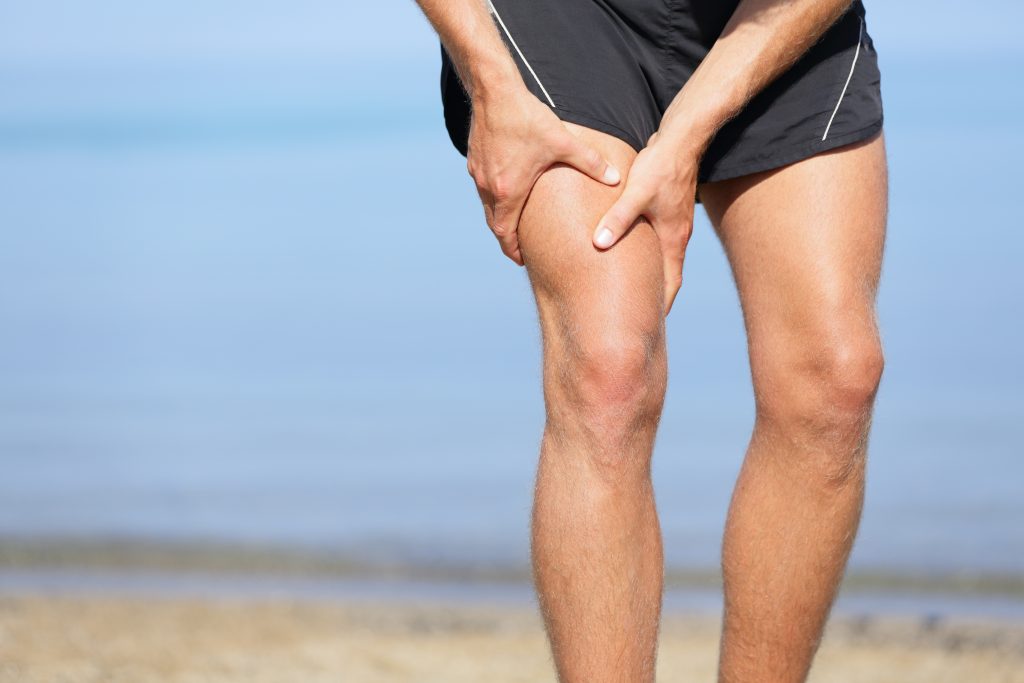
Risk Factors
- obesity or sudden weight gain
- Pregnancy
- Diabetics
- hypothyroidism
- 30-60 years of age

Diagnosis
Diagnosing this condition is mainly based on an individual’s clinical presentation through a thorough subjective and physical examination. A nerve conduction study may be required to confirm the diagnosis. An xray, or MRI may also be required to exclude/identify other injuries.
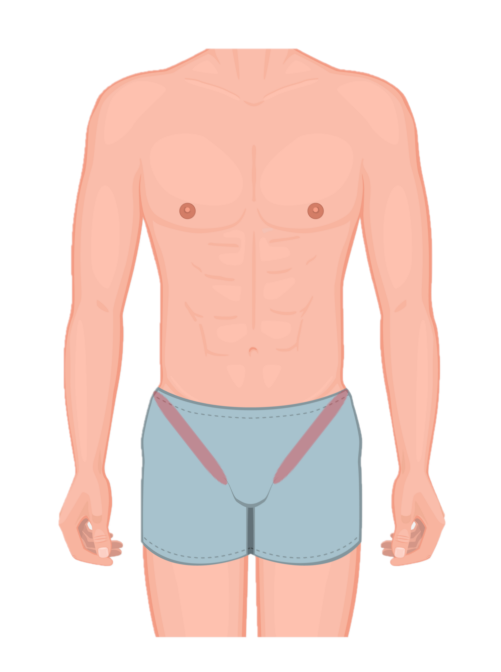
Treatment
- 90% of LFCN injuries will resolve with conservative physiotherapy management (see below).
- In some situations a cortisone injection to the compressed area may help to alleviate inflammation and swelling around the nerve.
- Desensitisation of the nerve using heat treatment may be considered in more persistent cases (see image below).
- Surgery is rare in the management of this condition and only indicated in situations where severe symptoms persist despite extensive conservative treatment. This typically involves surgically decompressing the nerve or removing a portion of the nerve.
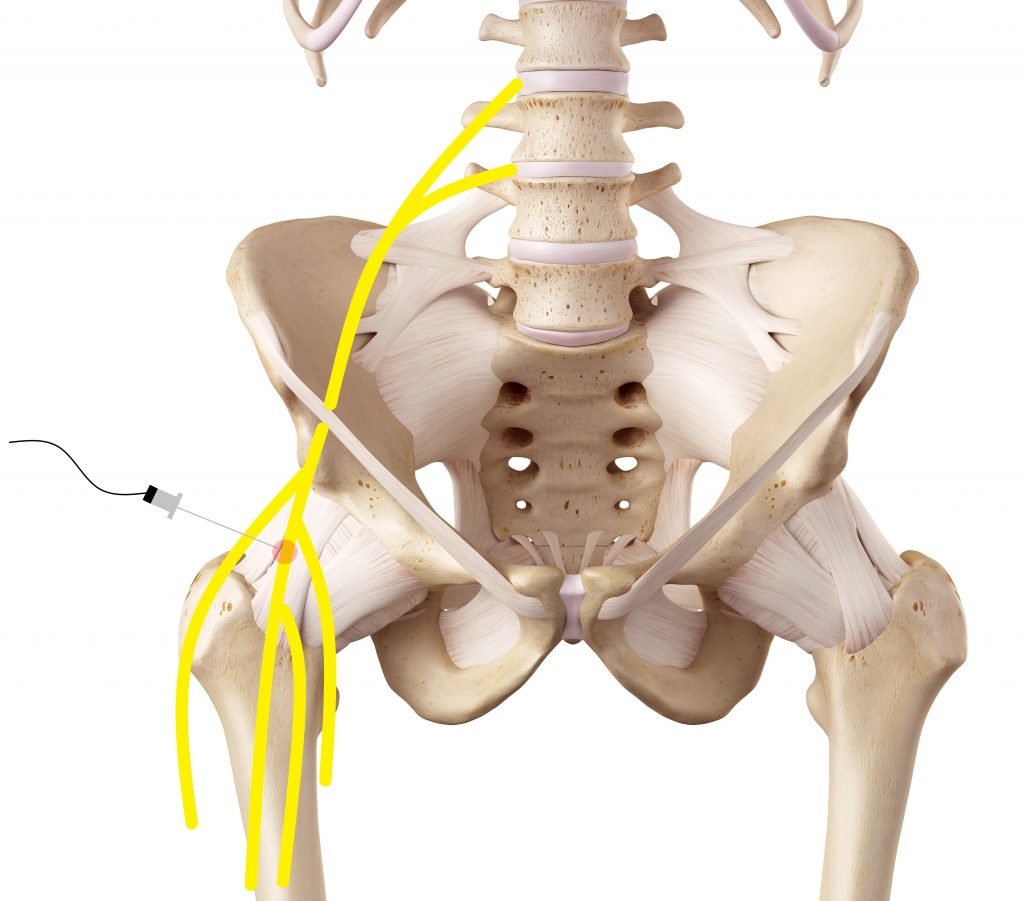
Physiotherapy Management
- Alleviate symptoms and decrease pain. Modalities such as strapping, massage, manual therapy and acupuncture may be used.
- Provide education, weight loss advice, identify and modify aggravating factors (i.e. wearing looser fitting clothing)
- Restore pain free hip range of motion by stretching the nerves and muscles
- Strengthen the hip and core muscles
- Identify and address movement and postural issues that may have contributed to the injury (i.e. flat feet)
- Normalise gait pattern
- Graded return to work, sport and function
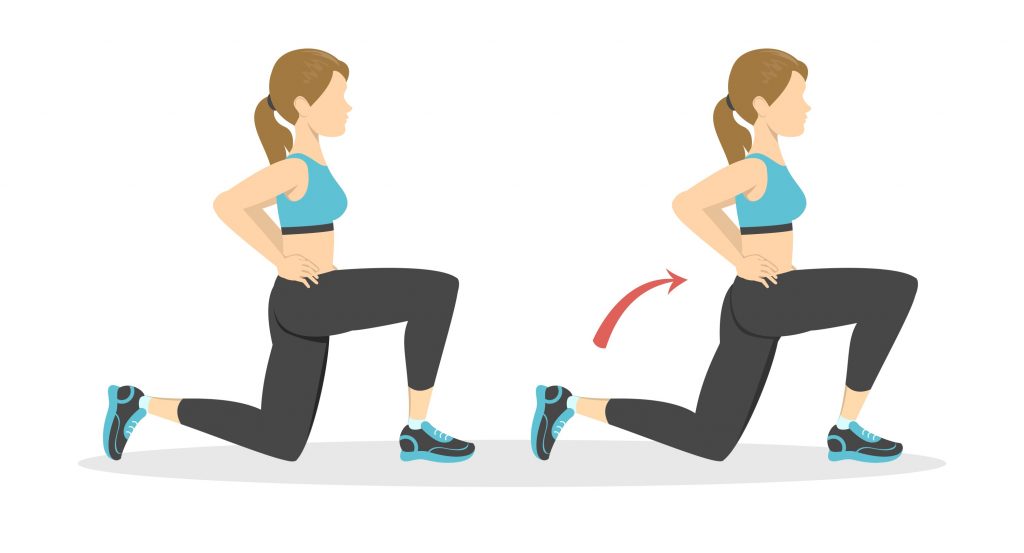
Please keep in mind the information provided is general in nature and should not be used as a substitute to consult your treating health professional. If you have any specific questions or require assistance with your individual treatment requirements please do not hesitate to contact My Family Physio in Pittwater Place Shopping Centre.
Related Articles